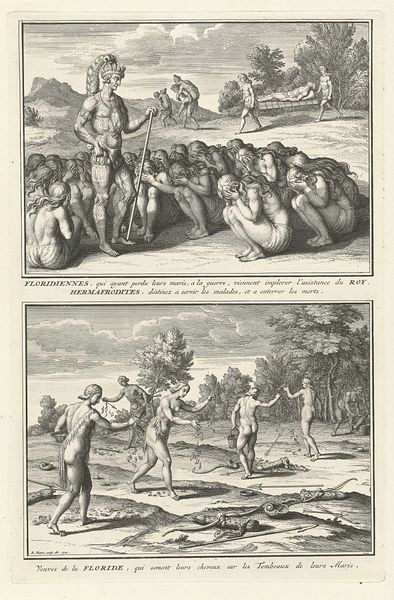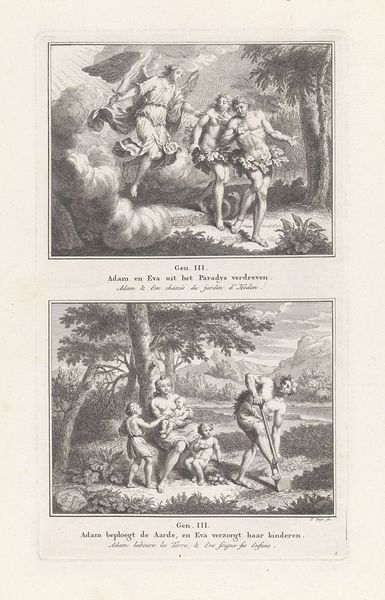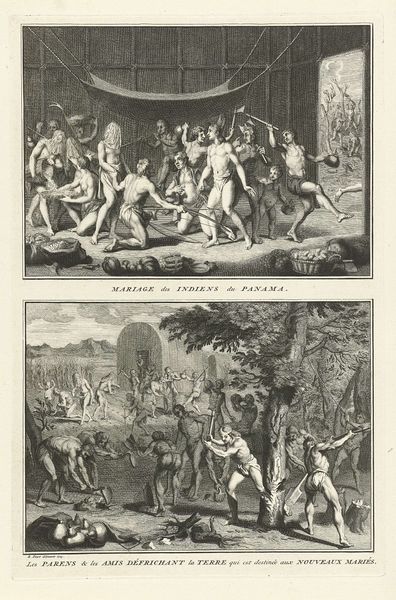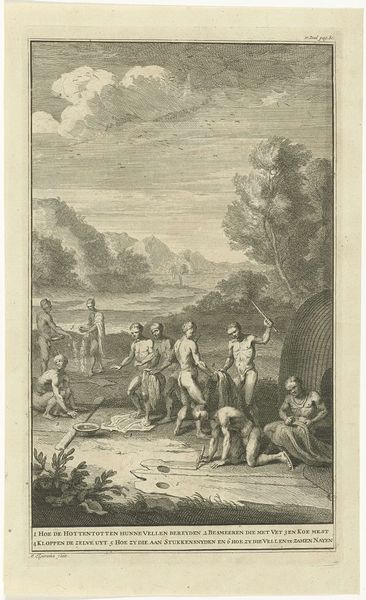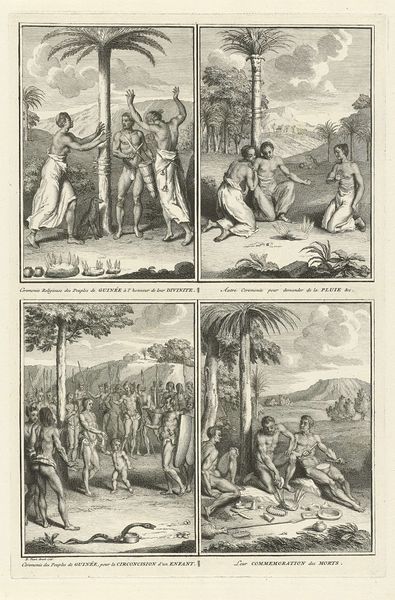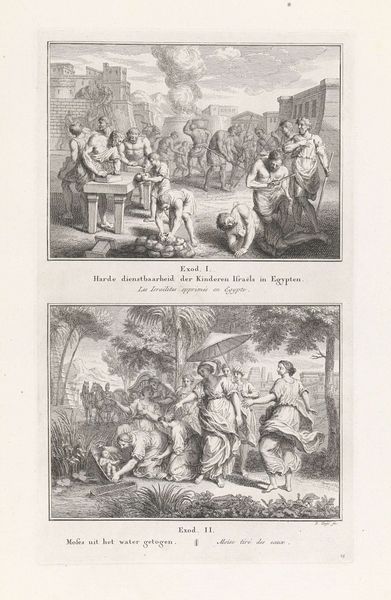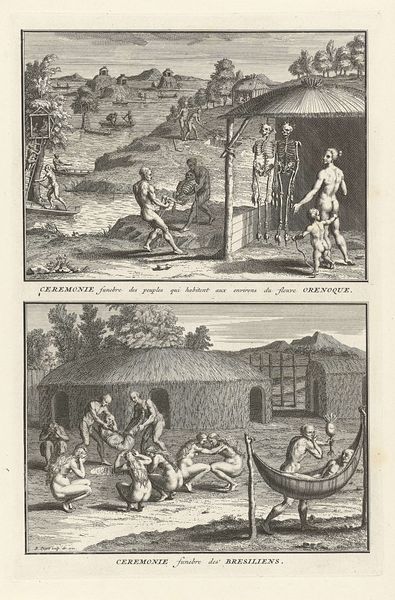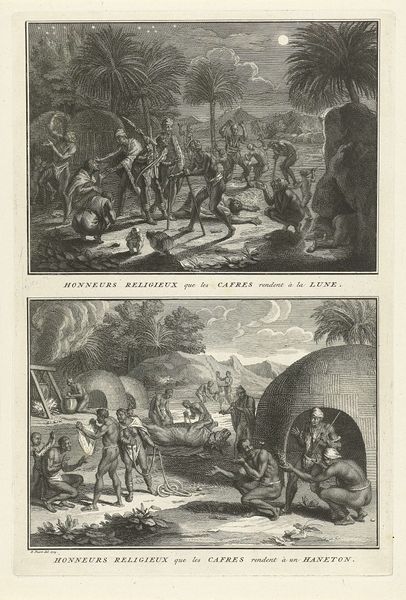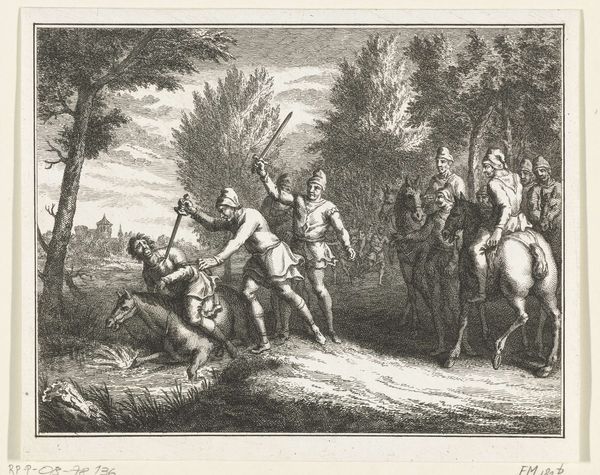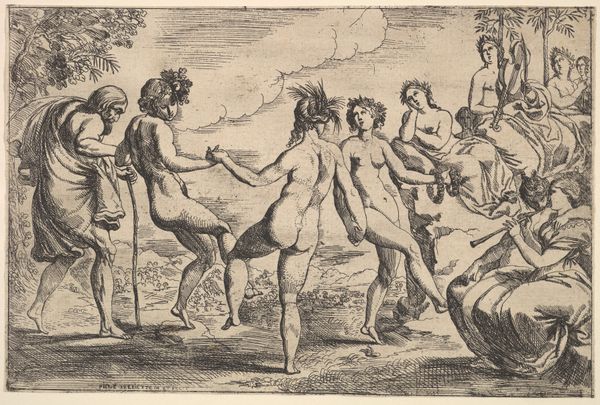
Genezen van zieken en begrafenis bij de oorspronkelijke bevolking van het schiereiland Paria, Venezuala 1723
0:00
0:00
bernardpicart
Rijksmuseum
print, engraving
# print
#
figuration
#
line
#
nude
#
engraving
Dimensions: height 333 mm, width 216 mm
Copyright: Rijks Museum: Open Domain
Curator: Here in Gallery 12, we’re looking at a 1723 engraving by Bernard Picart, titled "Genezen van zieken en begrafenis bij de oorspronkelijke bevolking van het schiereiland Paria, Venezuela," or "Healing the Sick and Funeral among the Indigenous People of the Paria Peninsula, Venezuela". Editor: My first impression? It’s a bit unsettling. The figures are so exposed, vulnerable, and there's a strong sense of… detachment in their expressions. It feels like a clinical observation more than an empathetic portrayal. Curator: Exactly. Picart, while creating this print, never set foot in Venezuela. He relied on second-hand accounts and sketches from explorers. So, we’re seeing his interpretation of these cultures, filtered through a very European lens. Notice the stark contrast between the upper and lower scenes? The top half depicts healing rituals, possibly involving water immersion and fire, while the bottom shows burial rites. Editor: Symbolically, water often represents purification and rebirth. But here, coupled with the rather rigid postures of the figures, it seems less about spiritual cleansing and more like a… well, like a procedure. Fire, in contrast, often signifies transformation and, in some contexts, destruction. Their presence in the healing ritual makes me wonder if there is any suggestion of some sort of purgative treatment. What do you mean a European lens? Curator: His style is line art realism which at the time had specific allegorical visual expectations to suggest a primitive, non-Christian, even barbaric culture. But I agree on your broader reading, the figures, with their classical, idealized bodies, almost seem like classical sculptures awkwardly transposed into this 'exotic' setting. Editor: And look at the funeral scene below. The group surrounding what I assume is a grave seems caught in a perpetual dance, or maybe a repetitive motion – digging? Preparing the body? It all speaks to a fixed ritual, devoid of personal grief, at least in the way we are taught to recognize it. Curator: Precisely. This print isn’t just about depicting these rituals; it’s also about shaping European perceptions of these cultures. Editor: So it makes us consider whose story we're really being told. Are we looking at indigenous practices, or a European interpretation, maybe even a distortion of them? Curator: Yes, It prompts a critical examination of how we construct narratives about ‘otherness,’ which remains startlingly relevant today.
Comments
No comments
Be the first to comment and join the conversation on the ultimate creative platform.
